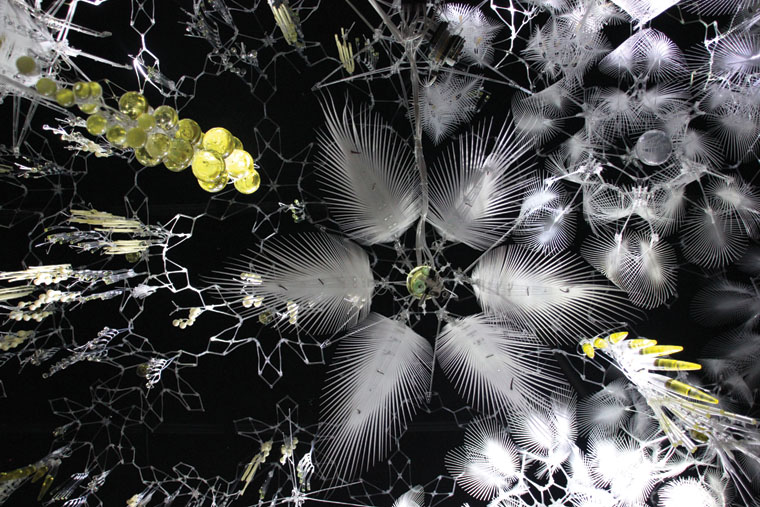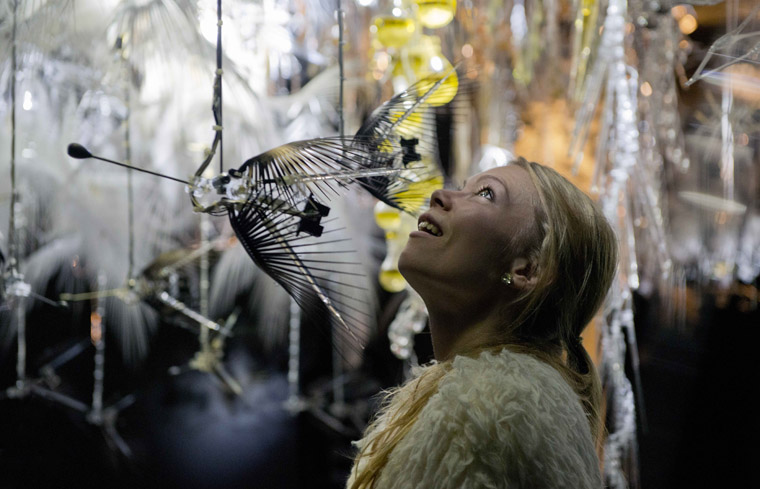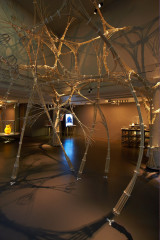To mimic a living metabolism
Radiant Soil

Philip Beesley
Radiant Soil is composed of tens of thousands of lightweight digitally-fabricated components that are fitted with microprocessors. Custom-fabricated layers of polymer, stainless steel skeletons and glass vessels make a hovering, layered set of cloud-like filters. The shape-memory alloy actuators within these filters stir air and stimulate the growth of prototype cells and other chemical processes housed within glass vessels. Akin to breathing, delicate plumes of convective air move in response to visitors. Several different kinds of active liquid cells are integrated within glass flasks. These include protocells, organic power cells, storage vessels, and scent-lures. Protocells are prototype chemical cells that behave in ways that are similar to living cells. Organic power cells provide weak amounts of current in pulses like unconscious reflexes within a human nervous system. Masses of miniature vessels contain salt, sugar and oil solutions provide a humid soil-like layer. All together they contribute to create a ‘metabolic’ system in constant flux that filter the air.

Akin to breathing, delicate plumes of convective air move in response to visitors.
Radiant Soil is part of the Hylozoic Series of sculptures pursuing near-living architecture. The sculpture is a creation of Philip Beesley of the University of Waterloo with the interdisciplinary design collective PBAI, and researchers Rob Gorbet, Rachel Armstrong and Martin Hanczyc. Radiant Soil is presented with the support of the Government of Canada and the Canadian Cultural Centre.

